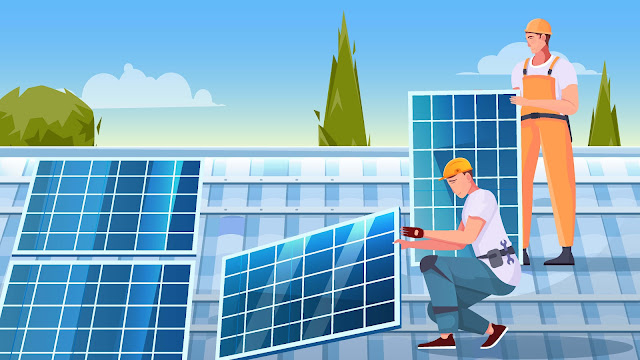How on-grid solar has changed the game for the Indian renewable industry
With rapid advancements in technology, many people have turned to renewable energy solutions. Wind power, solar power, and hydroelectric power have seen many buyers in the last 10 years. Why? Because they are cheap and abundantly available resources that do not harm the Earth's ecological balance.
According to the Indian Renewable
Energy Industry Report, India ranks 5th in wind power, 4th in solar power, and
5th in renewable energy generation.
Solar energy as a renewable resource
India is one of the most
attractive markets for renewable energy in the world. Electricity is the main
factor that determines economic growth, urbanization, industrialization, and
quality of life in society. Solar energy is a more reliable source of energy
than wind power or hydroelectric power because you cannot predict them
accurately. Therefore, the combined use of renewable sources of energy is
preferred as an alternative to other non-renewable sources of energy.
There are three main types of
solar energy systems:
- On-grid – Also called grid-tied or grid-fed solar systems.
- Off-grid – Also called stand-alone system.
- Hybrid – It is a combination of on-grid and off-grid systems. It has solar plus battery storage and provides a grid connection.
How does an on-grid solar power system work?
Solar on grid system is a solar power
generation system that is connected to the utility grid. This means that the
electricity generated is channelized into the grid. The system can be installed
without any hassle, is cost-effective, and is easy to maintain.
How it works: Solar panels
installed on your premises absorb sunlight and convert it into direct current
(DC). The solar inverter then converts this DC into Alternating Current (AC),
then this electricity is supplied through a grid for daily consumption which in
turn powers the electrical appliances we use in our homes/offices.
How have on-grid systems been transformative in
the solar industry?
Given the era of the rapid
development taking place in every field, consumers opt for gadgets and devices
that are convenient and do not require high maintenance. All solar power panels
work on the same basic principles and on-grid solar is preferred to be
installed in homes, offices, and commercial buildings.
Because a large number of
customers are happy to make the switch, solar energy has the potential to avoid
carbon footprints for years to come and help people move towards a greener and
cleaner future. Since solar energy is available in abundance, we need to
harness its true potential. A variety of systems are in place around the world;
However, on-grid solar power systems are widely preferred.
On-grid solar systems have many advantages:
Light on pocket and easy to
maintain - It is easy to install, set up, and maintain. There is no battery
that needs to be replaced frequently. This makes it an easy maintenance option.
Income generation – When excess power is generated, the consumer can transfer this excess energy back to the grid and receive compensation. He can save money and earn passive income from generated electricity and surplus electricity respectively.


.jpg)
Comments
Post a Comment